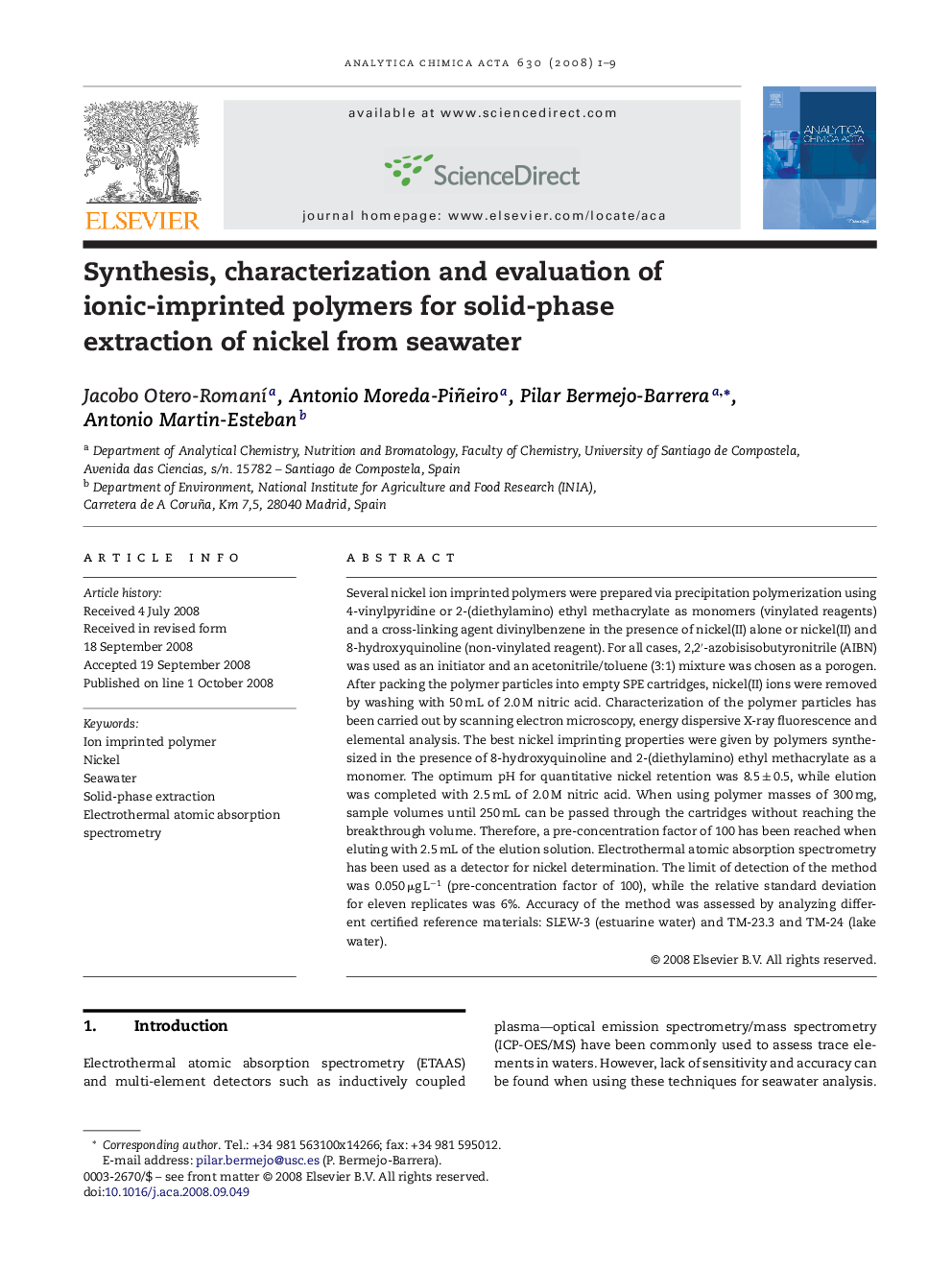| Article ID | Journal | Published Year | Pages | File Type |
|---|---|---|---|---|
| 1169011 | Analytica Chimica Acta | 2008 | 9 Pages |
Several nickel ion imprinted polymers were prepared via precipitation polymerization using 4-vinylpyridine or 2-(diethylamino) ethyl methacrylate as monomers (vinylated reagents) and a cross-linking agent divinylbenzene in the presence of nickel(II) alone or nickel(II) and 8-hydroxyquinoline (non-vinylated reagent). For all cases, 2,2′-azobisisobutyronitrile (AIBN) was used as an initiator and an acetonitrile/toluene (3:1) mixture was chosen as a porogen. After packing the polymer particles into empty SPE cartridges, nickel(II) ions were removed by washing with 50 mL of 2.0 M nitric acid. Characterization of the polymer particles has been carried out by scanning electron microscopy, energy dispersive X-ray fluorescence and elemental analysis. The best nickel imprinting properties were given by polymers synthesized in the presence of 8-hydroxyquinoline and 2-(diethylamino) ethyl methacrylate as a monomer. The optimum pH for quantitative nickel retention was 8.5 ± 0.5, while elution was completed with 2.5 mL of 2.0 M nitric acid. When using polymer masses of 300 mg, sample volumes until 250 mL can be passed through the cartridges without reaching the breakthrough volume. Therefore, a pre-concentration factor of 100 has been reached when eluting with 2.5 mL of the elution solution. Electrothermal atomic absorption spectrometry has been used as a detector for nickel determination. The limit of detection of the method was 0.050 μg L−1 (pre-concentration factor of 100), while the relative standard deviation for eleven replicates was 6%. Accuracy of the method was assessed by analyzing different certified reference materials: SLEW-3 (estuarine water) and TM-23.3 and TM-24 (lake water).
